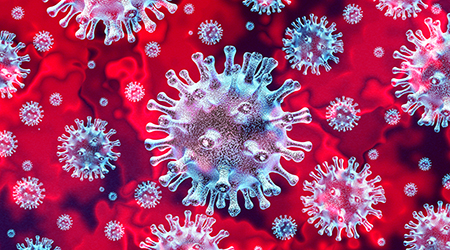In the last year, healthcare facilities managers have spent countless hours reviewing, discussing and updating their buildings’ HVAC system components and operations. The goal has been to prevent the spread of the coronavirus via airborne respiratory droplets. But in the earliest days of the pandemic, managers and their staffs focused not on HVAC systems but on keeping surfaces sanitized and disinfected — efforts that were largely misplaced, it turns out.
Studies have shown the risk of contracting COVID-19 from a contaminated surface is "generally less than 1 in 10,000," and in most cases, household cleaners rather than disinfectants are sufficient to ward off virus levels, according to new guidance from the Centers for Disease Control and Prevention (CDC) reported by Becker’s Hospital Review.
The primary mode of infection is through exposure to respiratory droplets, the agency said.
In community settings, there is little evidence to support the routine use of disinfectants, the agency said, adding that in most cases, cleaning surfaces with soap or detergent once per day effectively reduces virus levels.

 Grounding Healthcare Spaces in Hospitality Principles
Grounding Healthcare Spaces in Hospitality Principles UC Davis Health Selects Rudolph and Sletten for Central Utility Plant Expansion
UC Davis Health Selects Rudolph and Sletten for Central Utility Plant Expansion Cape Cod Healthcare Opens Upper 2 Floors of Edwin Barbey Patient Care Pavilion
Cape Cod Healthcare Opens Upper 2 Floors of Edwin Barbey Patient Care Pavilion Building Sustainable Healthcare for an Aging Population
Building Sustainable Healthcare for an Aging Population Froedtert ThedaCare Announces Opening of ThedaCare Medical Center-Oshkosh
Froedtert ThedaCare Announces Opening of ThedaCare Medical Center-Oshkosh